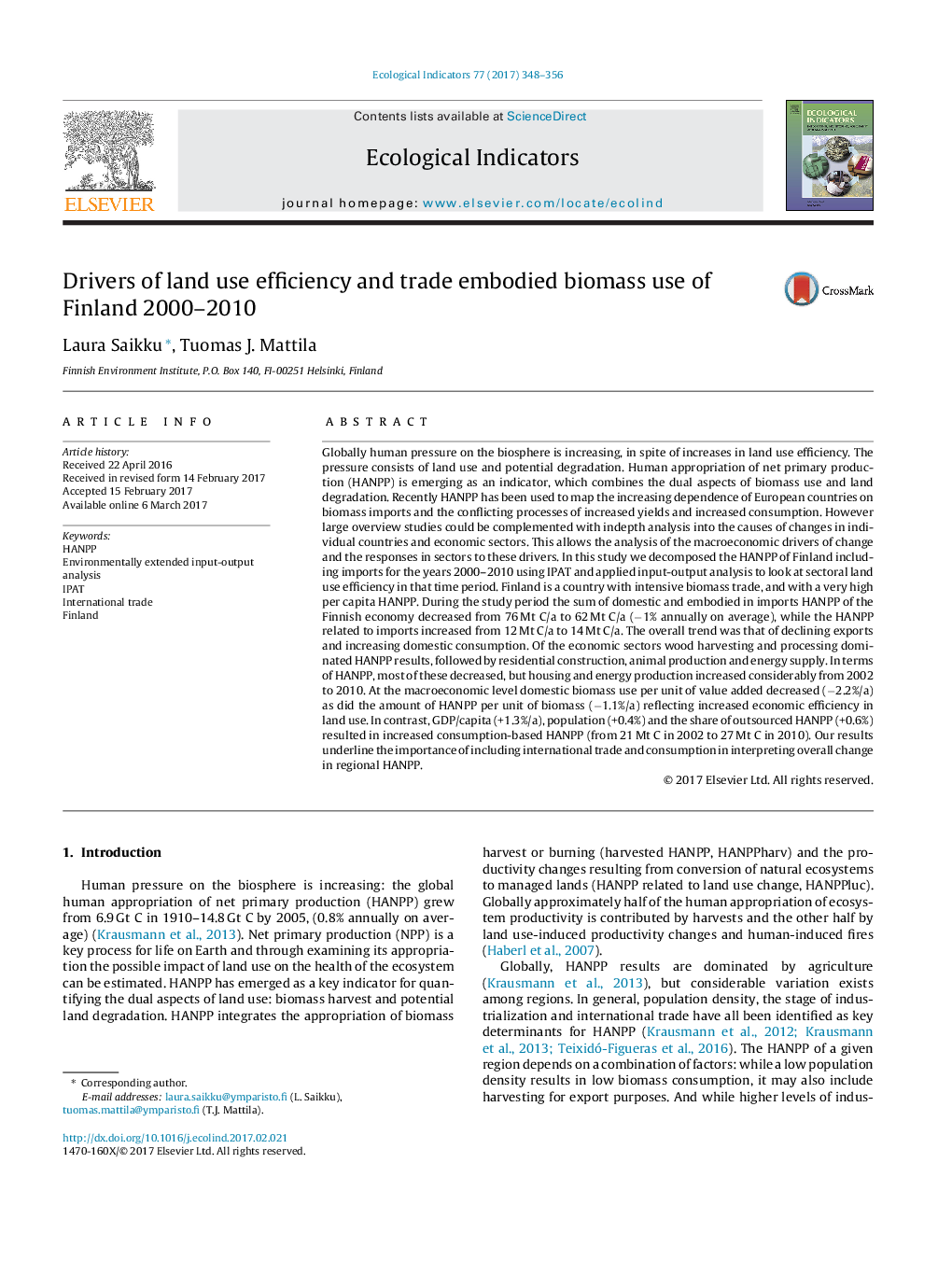| Article ID | Journal | Published Year | Pages | File Type |
|---|---|---|---|---|
| 5741738 | Ecological Indicators | 2017 | 9 Pages |
Globally human pressure on the biosphere is increasing, in spite of increases in land use efficiency. The pressure consists of land use and potential degradation. Human appropriation of net primary production (HANPP) is emerging as an indicator, which combines the dual aspects of biomass use and land degradation. Recently HANPP has been used to map the increasing dependence of European countries on biomass imports and the conflicting processes of increased yields and increased consumption. However large overview studies could be complemented with indepth analysis into the causes of changes in individual countries and economic sectors. This allows the analysis of the macroeconomic drivers of change and the responses in sectors to these drivers. In this study we decomposed the HANPP of Finland including imports for the years 2000-2010 using IPAT and applied input-output analysis to look at sectoral land use efficiency in that time period. Finland is a country with intensive biomass trade, and with a very high per capita HANPP. During the study period the sum of domestic and embodied in imports HANPP of the Finnish economy decreased from 76Â Mt C/a to 62Â Mt C/a (â1% annually on average), while the HANPP related to imports increased from 12Â Mt C/a to 14Â Mt C/a. The overall trend was that of declining exports and increasing domestic consumption. Of the economic sectors wood harvesting and processing dominated HANPP results, followed by residential construction, animal production and energy supply. In terms of HANPP, most of these decreased, but housing and energy production increased considerably from 2002 to 2010. At the macroeconomic level domestic biomass use per unit of value added decreased (â2.2%/a) as did the amount of HANPP per unit of biomass (â1.1%/a) reflecting increased economic efficiency in land use. In contrast, GDP/capita (+1.3%/a), population (+0.4%) and the share of outsourced HANPP (+0.6%) resulted in increased consumption-based HANPP (from 21Â Mt C in 2002 to 27Â Mt C in 2010). Our results underline the importance of including international trade and consumption in interpreting overall change in regional HANPP.
